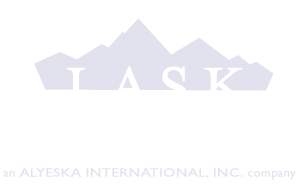
Prevention of drowsy driving accidents requires some forethought along with an admission that you cannot necessarily do everything that you want when you want it. In other words, you must realize that you a risk for having a drowsy driving accident and act accordingly.
There is no shame in recognizing the risks and taking precautions. Here is a guide to some of the risks that you face when you drive drowsy and ways that you can prevent an accident.
Drowsy Driving Statistics
First, here are some statistics about drowsy driving accidents so you can understand some of the risks that are involved. The National Highway Traffic Safety Administration compiles statistics on car crashes in the U.S.
According to the NHTSA, there are nearly 72,000 injuries that occur each year from drowsy driving. In addition to that, there are approximately 1,500 fatalities each year from drowsy driving. The Centers for Disease Control speculates that the number of fatalities may actually be higher than what was reported since drowsy driving is not always apparent when the cause of the accident is reported.
The statistics about drowsy driving are disturbing. About one in every five Americans admit to falling asleep behind the wheel each year. Nearly half of Americans will drive a car each year when they are exceedingly tired. However, when you take the appropriate precautions, this does not have to be you.
Drowsy Driving Risks
The major risk of drowsy driving is obvious. When you fall asleep behind the wheel of your car, you will lose control of the vehicle. Single car accidents have among the highest fatality rates of any crash.
Even if you do not fully fall asleep, being drowsy behind the wheel can still dramatically increase the chances of a crash. Your instincts are not as sharp as they otherwise would be if you were fully alert. When travelling at high speeds, delayed reaction time can increase the risk that you will rear-end the car in front of you. In many drowsy driving accidents, there is no evidence that the driver tried to apply the brakes.
What makes drowsy driving even more of a risk is that the majority of drowsy driving occurs at night. Not only are you extremely tired, but this is combined with decreased visibility that you would have at night. Thus, you will not be able to spot hazards on the road at a time when these problems would be difficult for even an alert driver to spot.
It is no wonder that drowsy driving is almost every bit as dangerous as drunk driving. In fact, the National Safety Council estimates that driving after going more than 20 hours without sleep is the equivalent of getting behind the wheel with a blood alcohol level of 0.08. This is the legal limit for alcohol in many states. In other words, drowsy driving is akin to drunk driving, albeit without the criminal consequences.
Preventing Drowsy Driving
There are many different steps that you can take to make sure that you do not become a statistic. The most important step begins with self-awareness. In other words, you must know that you are a risk. The old adage of “don’t be a hero” applies when trying to prevent drowsy driving.
Many drivers believe that they can caffeinate themselves out of any possible problem. While energy drinks and caffeinated beverages can help for a short period of time, they should not be the only answer. This is because these aids can wear off, and when they do, they can cause a driver to crash, both literally and figuratively. Here are some tips for how you can cut the risk of a drowsy driving accident.
Get Enough Sleep – While this step seems obvious, its importance cannot be overstated. It is critical to not just get enough sleep on one night, but to also get regular sleep. You should follow experts’ recommendation for sleep in one night, which is generally eight hours. While there is nothing to say that you should not drive if you have gotten less than this amount the night before, it is best to be aware of how sleep you have had recently to know that you may be a risk. Not only you should make sure that you have enough sleep in general, but you should make sure to get extra sleep before embarking on a long car trip.
Check Your Substance Intake – This also should go without saying, but even one alcoholic drink here can spell problems. Alcohol will accentuate any problems that you already have with being tired. In other words, it acts as a magnifier because the substance of the drink will interact with the chemicals in your brain to make you even more tired. At the same time, you should also take stock of your prescription medication and learn the side effects of it. Some medications may make you drowsy so, if it at all possible, try to avoid taking them at a time where you may get tired while driving. Avoid driving, and especially long car trips, if your medicine causes you to be tired.
Take Frequent Breaks – Drivers are at the most risk when they have long uninterrupted stretches of driving. This is where their eyes can become heavy and they may fall asleep. Even if they are awake, they reflexes may become desensitized. It is best to pull off the road at regular intervals even to take a short nap if necessary. Brief 15 minute naps interspersed with driving time can help you reach your destination safer. Your pattern should be drive, rest, drive and rest. You should plan ahead of time your rest intervals for your trip and stop for your breaks whether you need it or not.
Do Not Set Time Goals – Especially when driving at night, do not alter your schedule to arrive at your destination at a certain time. Throw time out the figurative window because the goal is to arrive safely as opposed to getting there on time. This is even more true when you are driving during peak drowsiness hours. Do not forgo a necessary break at night just because you want to get there by morning.
Your actions can decide whether or not you arrive alive. In case someone else has not taken the care that you can and should take and this has caused you injury, contact a car accident lawyer today. Drowsy driving is negligence because those who do not take the proper care are not acting as a reasonable driver would.
Conclusion
Driving drowsy can be deadly for you and anyone else driving beside you or working with you. If you feel drowsy throughout the day, especially when you had enough sleep the night before, you need to speak to a board-certified sleep specialist at Alaska Sleep Clinic. Contact us today!
Workplace Fatigue Cost Calculator
Author Bio
Steve Roberts is the managing attorney at the Law Office of Steve Roberts, LLC. Steve is originally from Omaha, Nebraska. After law school in Southern California, he moved to Denver, Colorado where he has developed his personal injury practice and become part of the Colorado legal community as a member of the Colorado Trial Lawyers Association and the Thompson G. Marsh Inn of Court.








